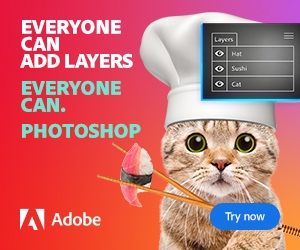Photo editing has evolved from simple touch-ups to complex digital artwork, revolutionizing the way we see and interact with images. With the rise of social media and the digital age, photo editing has become not just a professional tool but a creative outlet for people around the world. In this article, we’ll explore how photo editing has transformed over the years, the tools and techniques that have shaped its growth, and where the future of photo editing is headed.
1. The Early Days of Photo Editing
In the early days of photography, editing was a cumbersome and manual process. Photographers relied on darkroom techniques to alter images—manipulating film negatives, adjusting contrast, and even physically cutting and reassembling prints. The introduction of photo-editing tools such as cropping and exposure adjustments in the darkroom was revolutionary at the time.
However, these methods were limited, and editing required a great deal of skill and precision. It wasn’t until the digital era that photo editing truly began to evolve, opening up a whole new world of possibilities.
2. The Birth of Digital Photo Editing Software
In the 1990s, the advent of digital photo editing software marked a significant turning point in the history of photo manipulation. Adobe Photoshop, released in 1990, quickly became the industry standard. With Photoshop’s powerful tools and user-friendly interface, photographers and graphic designers could enhance and manipulate images in ways that were previously unimaginable.
Photoshop introduced a wide range of tools, including layers, filters, color correction, and cloning, allowing users to make complex adjustments without ever touching a physical photograph. The ability to edit photos digitally transformed photography into a creative process rather than just a technical one.
3. The Rise of User-Friendly Photo Editing Apps
As smartphones became more powerful, photo editing apps flooded the market, making photo manipulation accessible to everyone. Apps like Instagram, Snapseed, and VSCO made it possible for anyone with a phone to edit and share images in a matter of minutes.
These apps simplified many of the techniques previously reserved for professional editors, such as adjusting brightness, adding filters, and removing blemishes. For many users, these apps marked the beginning of their photo editing journey, allowing them to explore their creativity with ease.
The appeal of these apps lies in their simplicity. With just a few taps, users can enhance their images, apply artistic filters, and share them instantly with their social media followers. These platforms democratized photo editing, making it a hobby for millions of people and a valuable tool for brands and influencers.
4. Photo Editing for Social Media: The Age of Filters
Social media platforms like Instagram and Facebook have become the go-to places for sharing photos, and with that comes the demand for aesthetically pleasing visuals. Over the years, photo editing has evolved into a key part of social media strategy. Influencers, brands, and individuals alike have used photo editing to stand out in a crowded digital space.
Filters, once a simple addition to enhance a photo, have now become a cultural phenomenon. Instagram alone has over 30 built-in filters that users can apply with a single tap. These filters can dramatically change the mood of a photo, adding warmth, coolness, or even an artistic flair. Additionally, apps like Snapchat and TikTok offer even more specialized filters that can transform people’s appearances, add augmented reality elements, or create fun, interactive effects.
The demand for filters has sparked an entire industry of third-party apps that offer unique styles and effects for users. From vintage filters to futuristic neon glows, these tools help users develop a distinct visual identity. Today, photo editing is less about raw realism and more about creating an emotional response or an artistic interpretation of reality.
5. The Rise of Advanced Editing Techniques: AI and Machine Learning
As artificial intelligence (AI) and machine learning continue to evolve, they’ve begun to play a key role in photo editing. AI algorithms are now capable of automatically detecting and enhancing elements within a photo, from adjusting lighting to removing blemishes or even replacing backgrounds.
For example, Adobe Photoshop has introduced AI-powered features such as “Content-Aware Fill,” which allows users to remove unwanted objects from photos with a single click. The AI analyzes the surrounding area and intelligently fills in the gaps, saving hours of manual work. Similarly, tools like “Face-Aware Liquify” use AI to automatically detect and adjust facial features, enabling easy retouching of portraits.
Other AI-driven applications like Luminar AI and Skylum are designed to simplify the photo editing process even further, offering automated enhancements and creative effects. These tools analyze the content of an image and suggest adjustments that can improve the overall composition and mood, often with a single click.
While AI tools can streamline editing, they also spark a conversation about the future of creativity in digital art. Some argue that AI might replace the need for skilled editors, while others believe it will become a valuable assistant that enhances human creativity rather than replacing it.
6. Editing for Professional Photography and Digital Art
For professional photographers and digital artists, photo editing has become an integral part of the creative process. Editing allows photographers to push the boundaries of what’s possible, transforming ordinary images into extraordinary pieces of art. Whether it’s through advanced retouching, compositing, or digital painting, photo editing has opened up endless creative possibilities.
In genres like fashion, product photography, and fine art, photo editing is not just a tool for correction but a means of artistic expression. Photographers and artists use programs like Adobe Photoshop and Lightroom to create surreal, highly stylized images that would be impossible to capture in-camera. Techniques such as digital compositing—where different elements are combined from multiple images—have become staples in industries like advertising and visual effects.
One area where photo editing has truly blossomed is in digital art. Many artists now use photo manipulation as a medium, combining photography with graphic design, painting, and 3D modeling. This form of digital artwork can be seen in everything from album covers to movie posters, showcasing the limitless potential of modern photo editing.
7. The Future of Photo Editing: Virtual Reality and Beyond
Looking ahead, the future of photo editing is filled with exciting possibilities. Virtual reality (VR) and augmented reality (AR) are expected to revolutionize how we interact with images. With VR tools, users could immerse themselves in their photos, making edits in a 3D environment rather than on a 2D screen. This would allow for more intuitive and creative manipulation of images.
Furthermore, the integration of AI and VR could create highly sophisticated editing tools that anticipate and adapt to a user’s style and preferences. Imagine a system that not only automates editing but also learns from your choices, offering suggestions based on your past work and artistic inclinations.
In addition, as smartphone cameras continue to improve, it’s likely that photo editing will become even more advanced on mobile platforms, giving users powerful editing capabilities right at their fingertips.
8. Conclusion
Photo editing has come a long way from its humble beginnings in the darkroom. Today, it’s an essential part of the creative process for photographers, designers, and artists. From the rise of digital photo editing software to the integration of AI and machine learning, the tools and techniques available for photo manipulation are constantly evolving.
What started as a way to fix imperfections in photos has transformed into a form of artistic expression, where the only limit is one’s imagination. As technology continues to advance, we can only imagine the new and exciting possibilities that lie ahead in the world of photo editing.
Whether you’re a professional photographer or a social media enthusiast, understanding the evolution of photo editing and mastering its tools is key to creating impactful and visually stunning images in the digital age.


